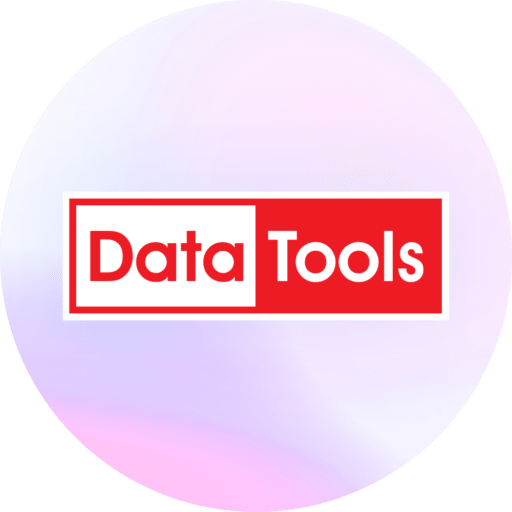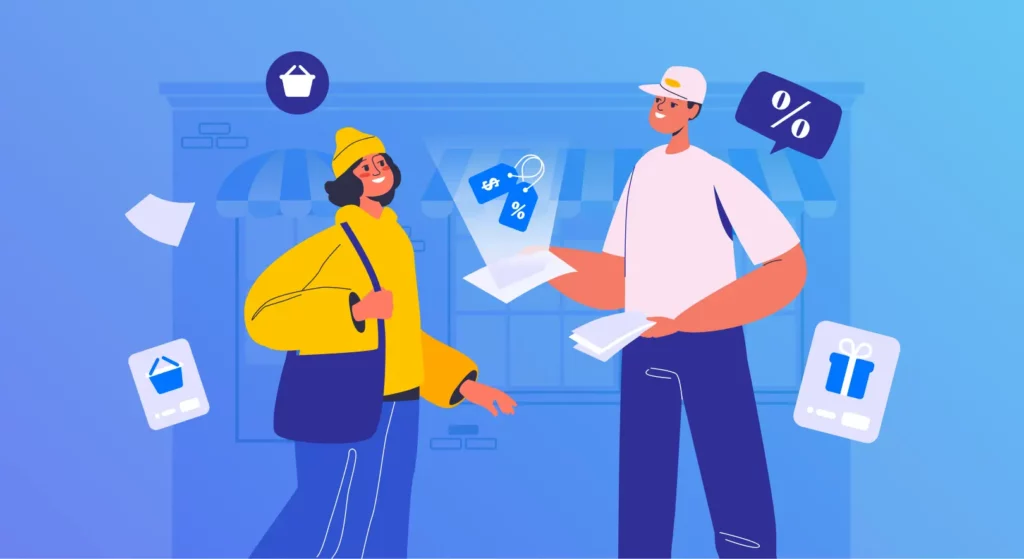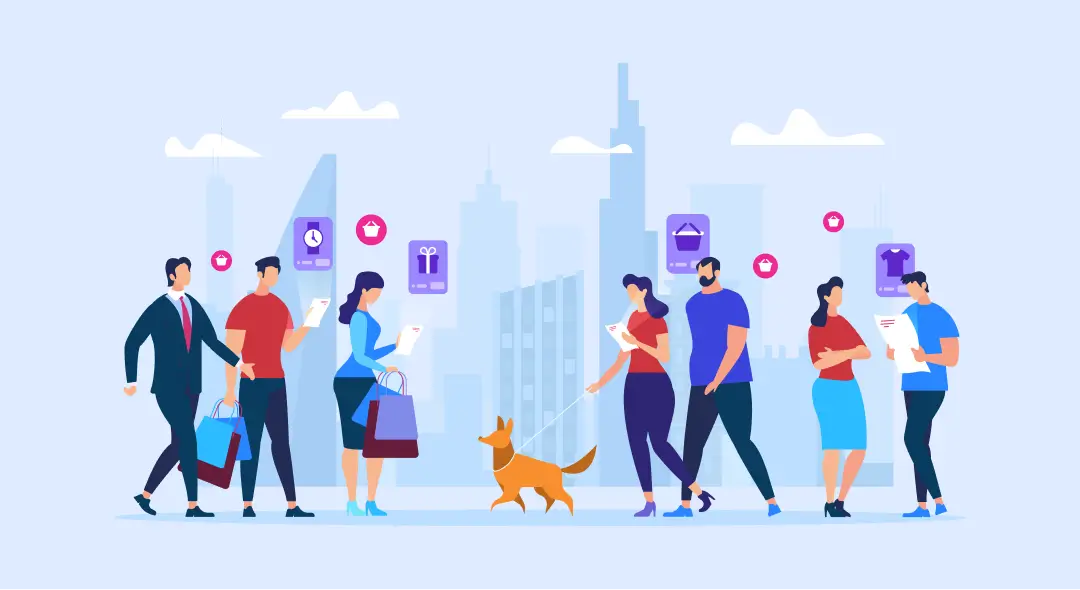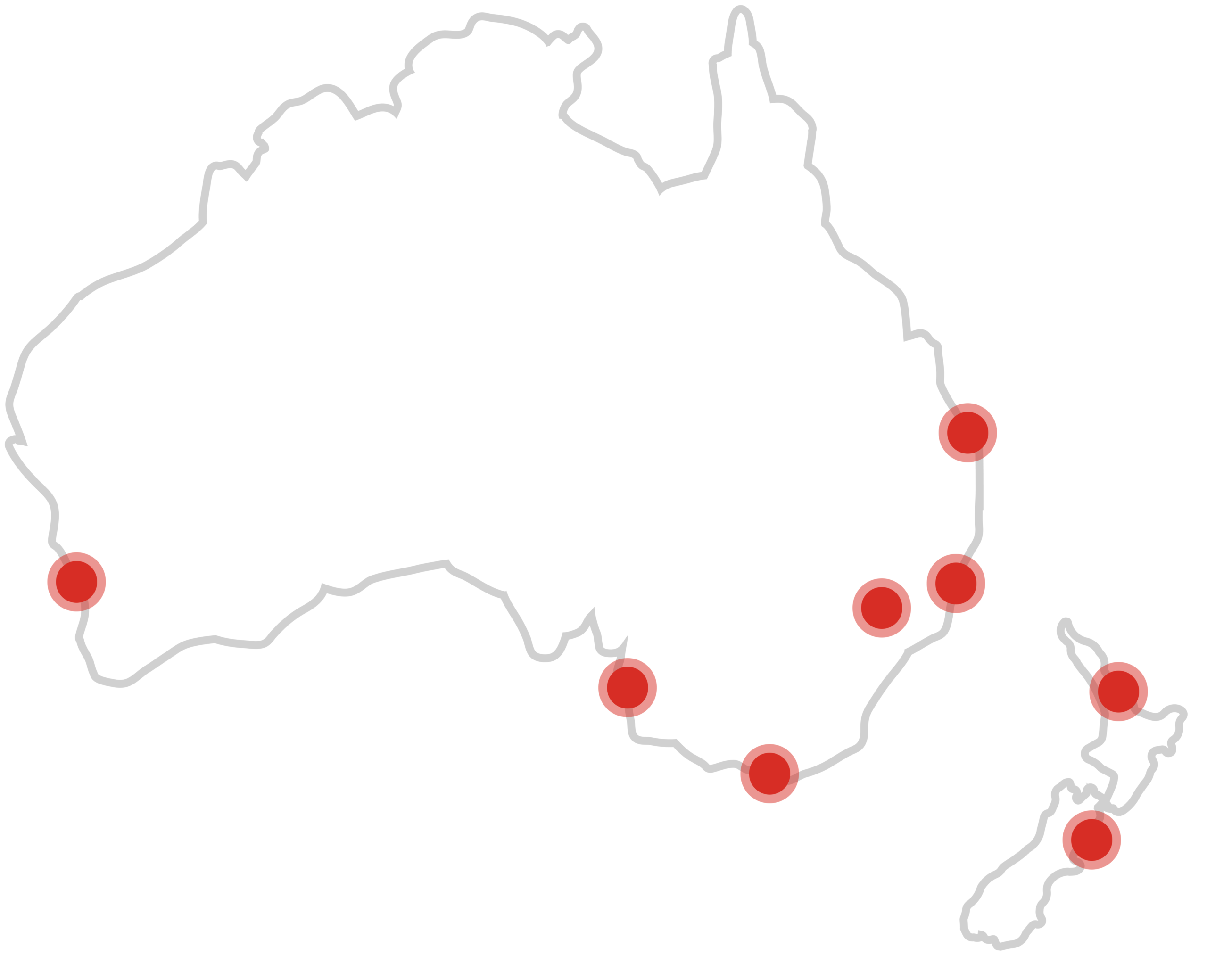
Offline Power: How to Craft Effective Flyer Campaigns

There’s nothing like a plate of mom’s home cooking.
And it’s not just about food. The local restaurant that can whip up your favorite guilty pleasure dish in ten minutes, the cafe down the road with the barista who knows your order by heart, and the bakery that always has a loaf of sourdough fresh out of the oven — these places become extensions of our homes.
These intimate experiences remind us that amidst the constant pressure to rush, be busy, and earn, there are still places where we can find a moment of solace and a taste of home.
But enough of the sappy stuff. Let’s get down to business.
Table of Contents
Does anyone actually read flyers?
You’d be surprised! Flyers are still a great way to market, especially to niche communities.
Imagine pushing your message out to just the people in a specific street, neighborhood, or block who are most likely to stroll into your store or click on your local ad. It’s personal, it’s direct, and boy, does it work.
So the answer is yes, even with the internet and smartphones: people still read flyers!. They’re still a great way to present the business because they provide immediate solutions that are nearby and accessible.
It’s about making one’s products and services the obvious choice for locals because you’re right there, speaking their language, serving up what they’re searching for.
Flyers are a great way to reach small parts of the community that are not available online, like these folks:
The time-honored crowd
When it comes to our cherished senior community, digital platforms like Instagram, Twitter, or Facebook might not be their go-to for news and updates. So, the burning question arises: how will they discover the cozy new bakery that just opened, or catch wind of the latest sales at their nearby grocery store?
This is where the traditional, tried-and-true methods of communication shine. Think about the power of a well-placed flyer in a community center, or a vibrant poster in the local pharmacy where they’re likely to visit.
Direct mail, too, can be a golden ticket, bringing news of local happenings and deals right to their doorstep, offering that personal touch that resonates so well with this audience.
Off-the-grid locals
This group isn’t typically found firing off tweets or updating Facebook statuses. But that doesn’t mean they aren’t keen on discovering the newest bakery around the corner or catching wind of the latest deals at their nearest supermarket.
So, how do we bridge this gap? It’s about tapping into the communication channels they trust and use. Think community bulletin boards, local newspapers, and even radio spots that reach into their homes.
It’s also about the power of word-of-mouth in small communities—once a few are talking about your place, news travels fast.
For local businesses, this means prioritizing accessibility and visibility in the non-digital spaces they frequent. Offering special discounts, hosting events, or simply ensuring your business is a topic of conversation at local clubs or gatherings can make all the difference.
It’s about connecting in the real world, where personal interactions and community bonds hold more weight than online likes.
Budget-bound browsers
For some, the digital divide is all about the money. Without the luxury of the latest gadgets or a steady internet, they’re not catching any online banners anytime soon.
Whether it’s a flyer tucked into a mailbox, handed out on a busy street, or pinned up on a community bulletin board, these pieces of paper become crucial tools in bridging the gap between local businesses and consumers mindful of where every dollar goes.
For businesses, understanding and leveraging this channel means recognizing the value of direct, physical marketing efforts. It’s about ensuring that those without the luxury of constant digital access can still engage with local offerings.
Flyers, in this context, are more than just pieces of paper; they’re lifelines for both consumers on a budget and the businesses eager to serve them.
Digital detoxers
Some people make an active decision to choose life beyond the screen, investing exclusively in connections that don’t need Wi-Fi. They’ve consciously stepped away from the endless scroll and ping of the digital world, choosing instead to engage in the face-to-face, and the tangible.
They’re out there preferring conversations over coffee rather than comments on a post, making connections that aren’t buffered by bandwidth.
Now, think about what this means for a local business. This segment of the population isn’t just clicking past ads on a screen; they’re living in the moment, in the real world.
They value the local—the coffee shop where the barista knows everyone by name, the bookstore where the smell of pages beats the glare of a screen, the local market where produce is picked by hand.
Traditional, in-person marketing efforts—think flyers in local cafes, posters at community centers, or sponsorships at local events—can directly engage this audience.
They appreciate the personal touch, the community feel, and the tangible in a way that digital efforts can’t always replicate. Don’t let this audience go to waste!
Hands-on professionals
Think about the people whose work doesn’t tether them to a desk or digital device. These are the folks like builders, chefs, or farmers, whose work is all about what they can touch, build, and create with their own two hands.
Their jobs are grounded in the physical world—cutting, cooking, planting—not in clicking on ads or scrolling through feeds.
For these professionals, effective communication likely means something they can see or hear in their everyday environment, not what pops up on a screen. They’re more about practical, real-world interactions.
So, reaching them with marketing means getting into their physical space, maybe through community bulletin boards, local event sponsorships, or even direct mail that they can pick up and read during a break.
Understanding this group’s needs and how they engage with the world around them is crucial. It’s not about flashy digital campaigns but rather about solid, reliable, and tangible methods of connection that make sense in their daily lives.
What kind of businesses benefit most from flyers?
Bringing people together. Small businesses and tradespeople are just a few examples of marketers that benefit from flyers.
While flyers are a great marketing strategy, it may miss the mark for certain businesses. Think of luxury brands and online-only businesses. Handing out flyers wouldn’t be the best way for online businesses to find their audience, and luxury brands may be hard-pressed to convey the exclusivity of their brand through this medium. Here are a few prime candidates that would most benefit from flyer campaigns:
- Hospitality Hotspots: Think bustling bars, cozy restaurants, quick-bite takeouts, and the behind-the-scenes magic of ghost kitchens.
- Handy Tradespeople: The local fix-it people for when a home emergency threatens to derail the entire day, such as builders, carpenters, plumbers, and electricians.
- Local Grocers: Small supermarkets and corner stores, making sure your pantry’s always stocked with the freshest produce around.
- Mom n’ Pop Shops: That quaint bookstore with the friendly librarian to the coffee shop where everyone knows your name. These small businesses are where community and convenience meet.
- Community Champions: The heart and soul of local vibes—charities, neighbourhood councils, and clubs.
- Financial Services: The go-to experts for when the numbers need to crunch, from tax and legal experts to bookkeepers.
- Politicians: Candidates vying for office, looking to connect with constituents, share their platforms, and rally support at the grassroots level.
These sectors stand to gain big from a well-aimed flyer drop, hitting the sweet spot of local engagement and bringing their services right to the doorstep of their next big fan.
Where flyer campaigns fall short
Make sure you hit your target! Flyers are best used in campaigns where you know precisely who you want and where to find them.
So far, this guide’s been about how handy flyers can be for certain kinds of businesses and certain audiences. But it does have its limitations. Diving headfirst into flyer campaigns without a strategy is like trying to hit a bullseye in the dark—possible, but why make things difficult?
The main problem with flyers is the increased uncertainty. Businesses need to gamble on the 50/50 chance that their flyers may reach their intended audience or be used as lining for the trash.
Add to that the money spent on printing, the side-eye from the eco-conscious crowd, and the guessing game of figuring out if any of it’s working, and you’ve got yourself a marketing headache waiting to happen.
Plus, when every mailbox is bursting at the seams with the latest pizza deal, standing out gets tougher by the minute!
Pinpoint accuracy
So, imagine being able to pick exactly who sees your flyers. No more guessing where they might be. Looking for families who are too tired to cook and need a dinner out? Bam, there they are. Need homeowners who are tired of their leaky faucets? Easy.
Businesses deserve to know that every flyer they print out reaches the right audience. That’s the kind of ease any business deserves to work with.
The most strategic way forward for a one-time, big-time flyer campaign would be to invest in Australian address lists that are updated regularly from the most authoritative sources, so whoever’s in charge of the campaign can stop worrying about sending flyers to addresses that don’t exist.
Alternatively, having an address validation service in Australia that uses address information collected by our very own posties could help supercharge any efforts to collect insights from the local demographic.
Wrapping it up
Now, some businesses might have the time and manpower to have someone stand on the street and hand out these flyers. Or they could have an employee bike through their neighbourhood and stick these flyers in the mailbox.
But if you need to get started now so you can build that relationship with the community, then even these seemingly low-cost efforts are a waste.
With all these challenges stacking up, the game-changer comes down to precision targeting, which can only be done with tools like Australian address lists and address validation software.
Have the poor fellow who’s biking around the neighbourhood or standing outside with a stack of flyers, head back in. With a lot less elbow grease than it would have taken to distribute those flyers manually, address data can get your business rolling and ready for action.
This is your opportunity to focus your precious resources on areas with the highest potential for engagement!
Hopefully, this guide’s shed some light on our perspective of flyer campaigns and how they can impact different kinds of businesses and audiences.
If you need more help with maximising your impact as a small business through data, flyer campaigns, and marketing, feel free to speak to one of our data specialists for more insights.







